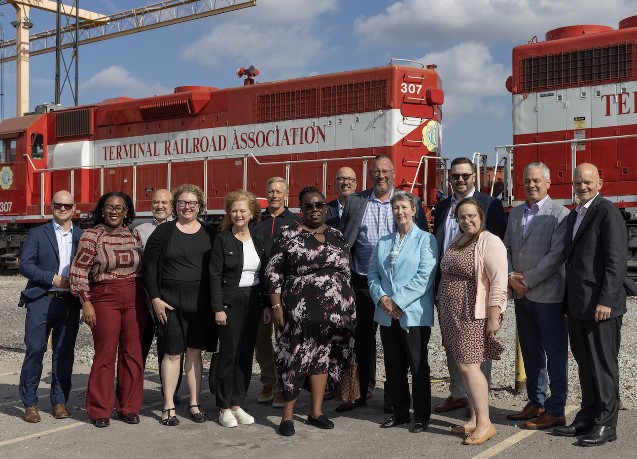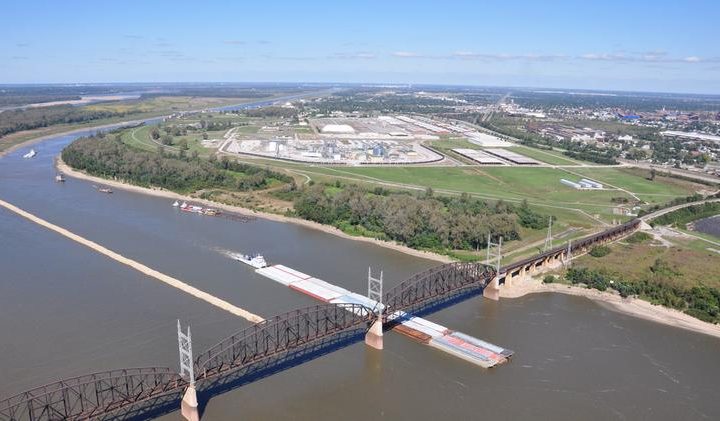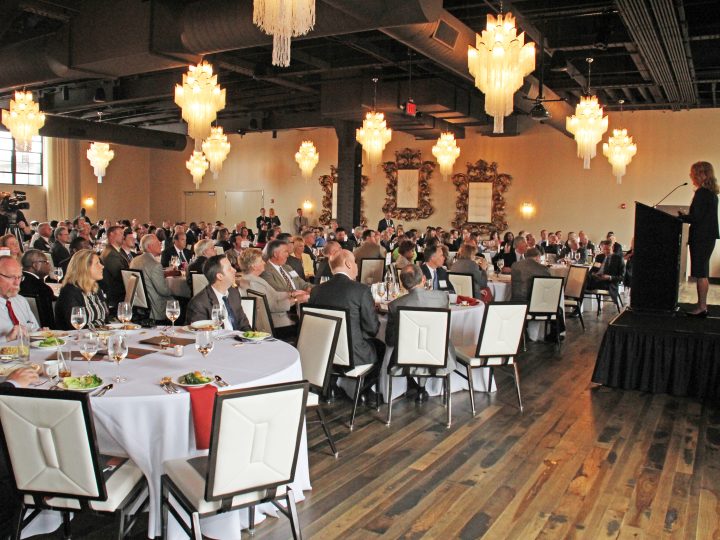
Ameren Illinois, in partnership with the Leadership Council Southwestern Illinois, the Illinois Department of Commerce and Economic Opportunity (DCEO), Intersect Illinois, Greater St. Louis, Inc., and the St. Louis Regional Freightway, recently held the inaugural Southwest Illinois Economic Development Leadership Summit, bringing together bi-state economic development leaders, the CEOs of major local companies, and other key stakeholders with a shared interest in making the region more competitive on a local, regional, national and global scale. The event highlighted the vital role of the Metro East as a key economic driver for the bi-state region, while also showcasing the regional freight assets and available workforce that support continued growth on both sides of the Mississippi River.
The summit kicked off with a networking dinner on Oct. 29, where some of the region’s top employers discussed the trajectory of the region, growth, and collaboration. Attendees included representatives from Alton Steel, Edward Jones, Enterprise Mobility, Graybar, Schnucks Markets, World Wide Technology and other leading companies in the bi-state St. Louis area, the majority of which have operations on both sides of the Mississippi River and recognize that growth in Southwest Illinois elevates the entire region’s economy.
DCEO Director Kristin Richards shared updates on the Pritzker Administration’s work to drive economic growth across the state, while Christy George, incoming President and CEO of Intersect Illinois, provided an update on the future direction of the only statewide economic development organization focused on bringing new businesses, jobs, and investment to Illinois.
Kyle Anderson, Executive Director of the Leadership Council Southwestern Illinois, which represents the nine Illinois counties in the bi-state St. Louis region, spoke to the importance of regional collaboration for the success of Southwest Illinois — an economic engine with over 650,000 residents. His service area is Illinois’ second largest population center and home to ¼ of the population of the entire St. Louis MSA.
“When I speak to people about Southwestern Illinois, even people who live here, they are shocked to learn about the vast amount of Defense, Aerospace, Agriculture industries we have thriving in our region,” said Anderson. “Southwestern Illinois has to get better at telling its story -from the amazing workforce development opportunities and build ready sites to the incentives that will help ensure businesses have the best opportunity to succeed.”
The Pritzker Administration’s focus on economic development and the priority that the St. Louis metro area business community places on regionalism were the focus of comments by Maggie Kost, Chief Business Attraction Officer at Greater St. Louis, Inc. The nonprofit investor-supported economic development organization is comprised of businesses, institutions and organizations of all sizes that reflect the full diversity of the region’s business community.
“Collaboration is alive and well in this region,” Kost said. “When we speak with a unified voice and market the strengths of our entire region, businesses take notice. Our economy is resurgent and it’s because of the collaboration that’s on display at this Summit.”
Energy was the focus at a welcome breakfast hosted by Ameren at its state-of-the-art Transmission Operating Center on Oct. 30. With emerging technologies like artificial intelligence, data center expansions, and “re-shoring” of manufacturing back to the United States, it is estimated that demand for electricity could grow as much as 15%-20% in the next decade. As the competition for these job-creating projects heats up, Ameren highlighted how it is working with community leaders to position its local regions to capitalize on these job- and wealth-creating opportunities.
“We’re not alone in this race,” said Lenny Singh, President of Ameren Illinois. “Regions across the U.S. are also positioning themselves to attract high-tech industries and economic investment. It’s highly competitive, and we can’t afford to be reactive. Together, we can ensure that the Metro East isn’t just a competitor in this space, but a leader.”
The showcase of regional assets continued with an opportunity to see the region’s freight assets and rail-served development-ready sites from a unique vantage point. State and local economic development leaders embarked on a rail tour hosted by the Terminal Railroad of St. Louis (TRRA) and the St. Louis Regional Freightway.
Departing from St. Louis Union Station, the tour included multiple points of interest with a key focus on the Illinois side of the Mississippi River and the region’s world-class infrastructure providing modal flexibility along with efficient and reliable freight movement. Attendees learned about the project to rehabilitate the MacArthur Bridge, TRRA’s proposed Sustainable Aviation Fuel site, several East Riverfront facilities, including Cargill, Bunge, the Ameren Ash Pit and TRRA’s Riverfront Property as well as TRRA’s proposed Multimodal Freight Yard Expansion in Madison.
“The St. Louis region is one of just two places in the entire country where all six Class I railroads come together,” said Brent Wood, President and CEO of Terminal Railroad Association of St. Louis. “That makes this area key to the global supply chain.”
Mary Lamie, Executive Vice President of Multi Modal Enterprises for Bi-State Development and head of the St. Louis Regional Freightway, provided additional context. “The confluence of six Class I railroads, four interstates with low congestion and no tolls, and most strategic location on the Mississippi River, along with two international airports, all support our role as a global logistics hub,” Lamie said. “We’re hoping that these tours provided participants with a better understanding of how the region’s bi-state freight assets benefit site selection in Southwest Illinois and the streamlined approach public and private sector leaders are taking to advocate for infrastructure funding.”
The summit concluded with a visit to Scott Air Force Base, the largest employer in the Metro East and a global mobility and transportation hub for the U.S. Department of Defense. Senior leadership at the base showcased one of the region’s greatest defense assets.
Singh expressed appreciation for the many regional leaders who took time out of their busy schedules to participate in the summit and highlighted the importance of such initiatives to strengthen the region’s competitiveness.
“When our businesses are strong, the benefits ripple across the region, bolstering our local economy, supporting families, and building communities,” said Singh.




